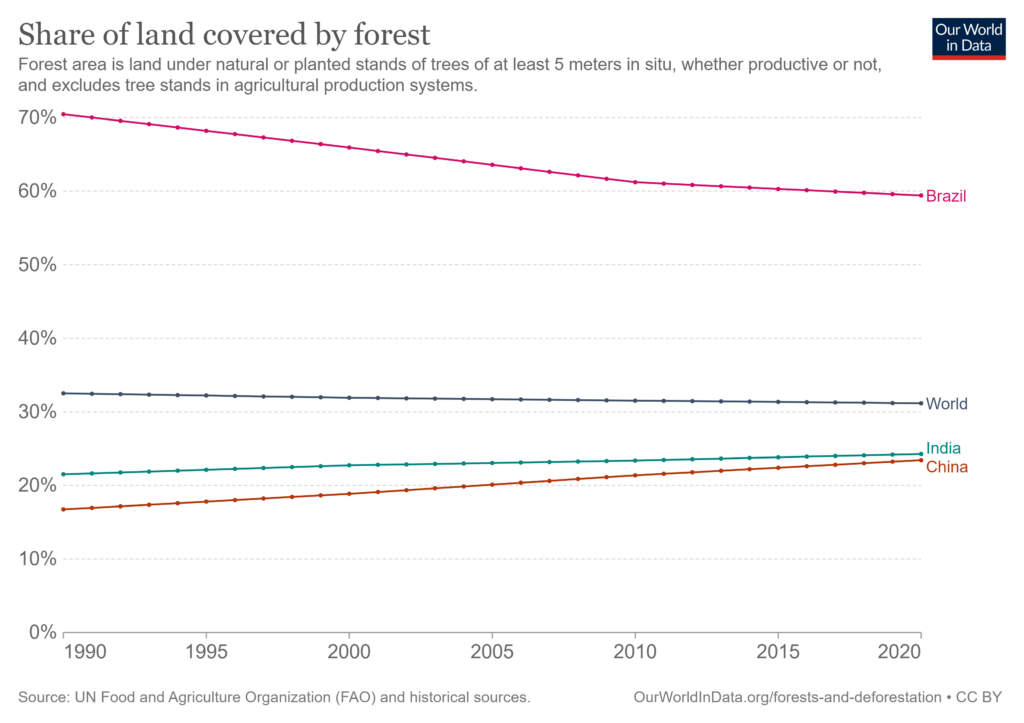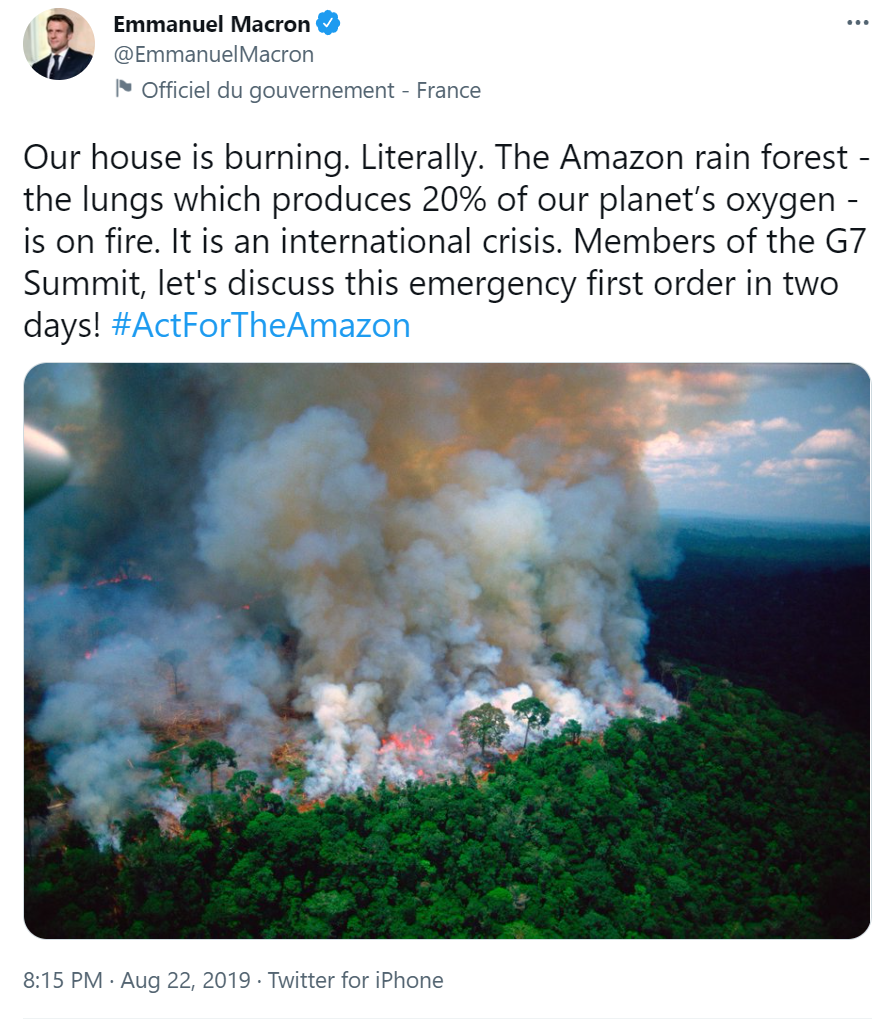- Despite popular understanding and news stories about ecological destruction, most parts of the world have seen significant afforestation.
- The global deforestation rate is slightly negative, and is driven by concentrated deforestation.
- Many comments reveal an irrational understanding of forests’ role in the global ecosystem driving policymaking.
Deforestation has long been a concern to all sorts of people and isn’t particular either to environmentalists or conservationists. This is why the survival of forests has become an emotive issue, and this emotion mobilised to service the green agenda. The UK’s Natural History Museum, for instance claims that ‘Centuries of farming, building and industry have made the UK one of the most nature-depleted countries in Europe’, that ‘Before the Industrial Revolution, forests covered much more of the UK than they do now’, and that ‘things are getting worse, not better’. But these claims are misleading.
One of the facts often forgotten in the climate debate is that the discovery of fossil fuels was very likely the best thing that has ever happened to forests. Just as crude oil proved to be far more useful than products derived from whale hunting, thereby saving the whale, coal, oil and gas broke people’s dependence on wood for fuel. Similarly, though many believe that deforestation is a recent phenomenon, most deforestation in Europe preceded the industrial era. The misapprehension of deforestation as a recent phenomenon is driven by politicised green organisations, who routinely fail to explain environmental problems in their full historical, statistical, developmental and economic contexts.
In Britain, for example, the mid 1500s to the mid 1600s was the century of peak deforestation, in which Britain ‘ran out of wood’ and the switch to coal began. Historians suggest that deforestation began in the British Isles during the Neolithic era, around 4000 BC, and that by the arrival of the Romans through to 1086 (as recorded in the Doomsday Book), England’s wooded areas occupied just 15 percent of the land. According to the UK government’s environmental accounts, 10 percent of England and 13% of the UK is now woodland – an afforestation that has seen a doubling of woodland area over the last century.
More ambitious afforestation programmes have been adopted in China and India, reversing historical declines. India has increased its forested area from 21.5 to 24.3 per cent, and China 16.7 to 23.4 per cent. Though these increases may seem modest in percentage terms, both of these countries are vast, so the afforestation of these areas represents a significant change.

The world has seen a slight reduction in forest cover since 1990 – a fall of about 1.3 per cent. Of particular concern to many is the loss of the Amazon Rainforest. Brazil’s forest cover dropped 11 percent between 1990 and 2020, though the rate of loss slowed in the last decade. Many environmentalists are concerned that climate change and global warming are affecting forests, but what the data shows is that most of the world’s forest area is far more sensitive to direct human interventions, both positive and negative, than to the climate. This confounds an attempt to understand how global warming will affect or has already affected forests.
Green fears may also be allayed by the discovery of CO2’s fertilising effect on trees. According to research from 2016, ‘global greening’ maybe underway, and that the increased vegetation now covering the world is having a cooling effect. This is a second important fact that challenges the story that climate change would turn forests into deserts.
Another misleading idea about the importance of forests of all kinds is that they are the ‘lungs of the planet’ – i.e. convert CO2 back into oxygen through photosynthesis. During a highly publicised outbreak of wildfires in the Amazon in 2019, French President Macron tweeted that the region’s rainforest ‘produces 20% of the planet’s oxygen’.

Macron was almost certainly wrong. Ocean life is by far the largest contributor to atmospheric oxygen, with perhaps as little as 20 per cent coming from land-based plants and trees globally, not the Amazon rainforest. Moreover, researchers point out that in net terms, forest ecosystems produce very little oxygen, if any, because as trees shed leaves and twigs and die, and are home to many species, the oxygen they produce is absorbed by those processes. The atmosphere itself is 20 per cent oxygen, and this is a vast supply that is in no danger of running out.
